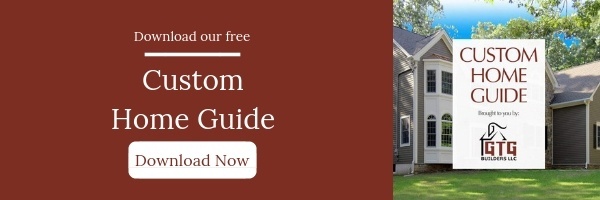3 Min Read
How to Plan a Custom Home
You’ve been dreaming about your new home for years. You’ve planned, researched, and saved as you envisioned your perfect custom home. Now, you’re ready to meet with your custom home builder and move one step closer to turning your dream into a reality.
While the home-building process is an exciting experience, the freedom to create something completely your own can also feel overwhelming without expert help to guide your focus. That’s why every custom home project starts with a pre-construction meeting. Here, you’ll dive into the details of everything you’re looking for in your new home and establish clear communication between you and your home-builder.
Before your first meeting with a custom home builder, here are some things to consider preparing in advance to help kick things off more smoothly. Watch the video below and save this list for later so you’ll always have these essentials at your fingertips.
1. Bring Inspiration Photos
From the ground up, your custom home should be designed to match your unique tastes. Inspiration photos are a great way to visually define your go-to style trends and design favorites. By providing visuals, your designer and builder will be able to quickly understand your expectations and requests—and be able to ask more questions.
The more details or examples you can share with your custom home builder, the better. Great places to find inspiration include:
- Magazine clippings
- Interior design lookbooks
- Pinterest boards
- Instagram posts
- Snapshots of homes you see with certain features that you like
- Examples of quality custom homes that you admire
Maybe you only have a few photo examples or preferred design elements to start. That’s ok! Bringing any ideas you have to the pre-construction meeting will help your builder have a clearer sense of how to capture your vision in your custom home’s design and layout.
2. Create a Must-Have List
When it comes to designing the perfect home, everyone’s priorities will look a little different. One of the many benefits of the design-build process is having the opportunity and freedom to design a home that matches all the qualities of the home of your dreams. Unlike a home built for a generic customer, the design-build firm or company puts your personal needs and wants as their sole focus.
To fully understand what you and your family need to live comfortably and happily, put together a must-have list for your builder. Your must-have list includes all the things that are non-negotiable.
Start with everything you need for your family to live comfortably—like the number of bedrooms and bathrooms or if you need a dedicated home office. Then, to help figure out what you should add to your must-have list, consider your current home's limitations and what construction choices could improve your home’s functionality by eliminating those issues.
Your must-have list can include things like:
- Larger kitchen and dining space
- High ceilings in the living room
- First-floor primary suite
- More functional storage options in the mudroom or entryway
- 3-car garage or larger
- Home office that’s located in a quiet part of the home
This is also a great time to think about your ideal timeline—this will greatly influence how your custom home builder should plan and organize the project.
3. Create a Wishlist
Unlike your must-have list, your wishlist includes items that will transform your custom build from a place where you could reasonably live to your dream home where you will thrive.
Your wishlist can include things like:
- Spa primary bath with a steam shower and luxury freestanding bathtub
- Billiard room, home theatre, or other entertainment features in the basement
- Primary room private balcony
- Coffee bar with a high-end, built-in espresso machine
- Outdoor living space oasis with water features and thoughtful landscaping
- Cozy reading nook with bay window seating
- Playroom for the kids or grandchildren with plenty of storage
This wishlist goes beyond style ideas. It can also cover significant construction decisions that directly impact your home’s overall layout and total square footage.
4. Consider Your Future
For a home that will satisfy your needs for years to come, plan your custom home’s design with long-term goals in mind.
If you’re planning to add a new addition to your family, be sure to plan for extra bedrooms and bathrooms on the second floor. If you’re planning to retire soon, think about how your home could offer more spaces to relax and entertain, like a covered outdoor den or patio. Maybe you’re inviting in-laws or adult children to move in? Your builder can design a detached in-law living space equipped with their own kitchen.
By thinking about how your life may evolve and grow, your dream home will stay your dream home for years to come.
5. Choose a Design-Build Expert
There’s no doubt that the custom-build design process is complex, but if building a custom home is a good fit for you, then your builder should guide you through each step and help you understand what to expect from start to finish.
Every home builder should help you define your goals and have the resources and expertise to deliver what you’re looking for. A design-build firm goes one step further. We specialize in a process that’s time-efficient, cost-efficient, and less stressful by serving as the project manager, rather than the homeowner.
Looking to build your custom home in Central New Jersey?
We will help you seamlessly navigate the process: from planning and construction to budgeting, land acquisition, design, demolition, zoning, and all the environmental and site issues that will come up.
From complete teardown and rebuilds to new construction, our dedicated team has the experience and knowledge to build a custom home in Hunterdon County and beyond. Contact us to get started today.




